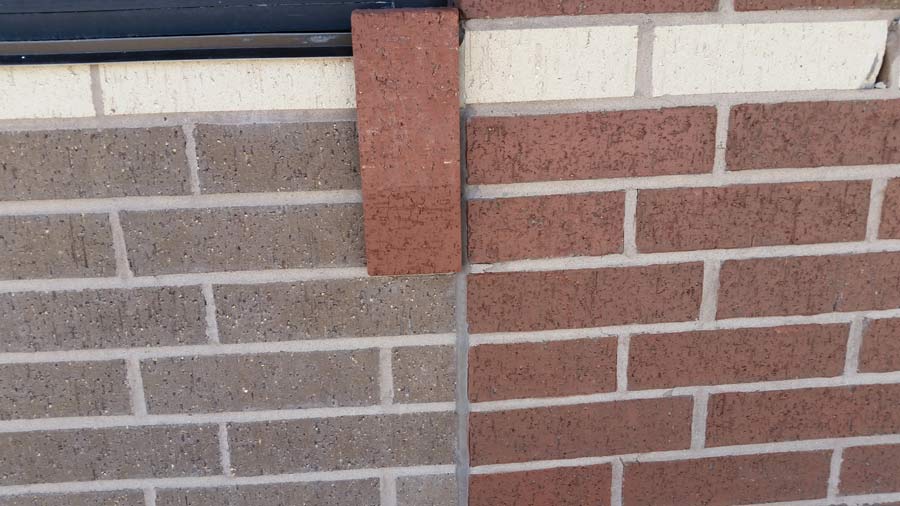
The most important differences between painting and staining brick
1. Painting brick requires maintenance. Staining is permanent.
The day you paint your brick is the day that paint degradation and maintenance begins. Not what you expected, right? According to the Brick Industry Association, you should expect to paint your brick every 3-5 years. This is mainly due to common adhesion failures associated to painting brick, like efflorescence. Efflorescence occurs when soluble salt deposits migrate to the surface during the evaporation of water. These stubborn white deposits essentially sit under the coat of paint, causing the paint to eventually lift and peel. As opposed to covering the surface like a paint, a brick stain is absorbed by the brick and ultimately acts like a dye. Silicate minerals travel deep into the masonry and form a chemical bond with the brick (which we’ll talk about later), tinting the brick for a permanent colour transformation that doesn’t require any maintenance.
2. Painting brick traps moisture. Staining lets the brick breathe.
As a porous surface, brick must be able to breathe (painting 101 folks). Painting brick saturates the brick’s pores with paint, preventing the brick from effectively releasing water and moisture. Since the moisture cannot evaporate, it stays trapped within the surface and results in blistering and chipping. As more water can potentially enter the brick through these cracks and chips, more water stays trapped within the surface and can lead to water damage over time. Our brick stain is formulated with silicate minerals and maintains the brick’s physical properties intact, as if it were practically untreated, allowing it to successfully release water and moisture. When brick can properly perform its job of releasing moisture, you’re left with a superior, long-lasting finish without unsightly blistering, chipping and peeling.
3. Painting brick creates a film over the brick. Staining forms a chemical bond with it.
As previously mentioned, painting covers and coats the brick in a non-breathable film. On the other hand, our brick stain forms a chemical bond with the masonry and actually becomes a component of the brick itself due to a process of petrification. As opposed to a surface treatment, the stain penetrates deep into the brick and once dry, forms a durable bond with the masonry to permanently lock in colour. The result is a permanent finish that looks just like brand-new brick.
4. Painting brick results in flat finish. Staining keeps its natural look intact.
Painting completely fills the nooks and crannies of the brick. As paint simply sits on the surface, it creates a noticeably painted, thick, flat finish which causes the brick to lose its natural look and feel. The opaque, slightly translucent finish of our stain in particular highlights and enhances the brick’s natural texture. If you touch the brick after our stain has dried, you’ll notice that you’ll feel brick and not paint. Available in a variety of different colours, you can lighten, darken or completely change the color of your brick to refresh and modernize the look of your home.
It looks like we have a clear winner when it comes to the battle of painting vs. staining brick! Staining brick is a permanent solution that not only looks more natural, but also allows the brick to do the one thing it’s meant to do: breathe! Not only will staining your exterior brick give your home an instant facelift, it doesn’t require any maintenance like painting. Brick is one of the most durable siding options available, which is why it’s also one of the most expensive to replace. If your brick is in good condition, then you can save on the cost of completely replacing your masonry by staining it!
Surob Atakulov
President of American Brick Staining, LLC


0 comments